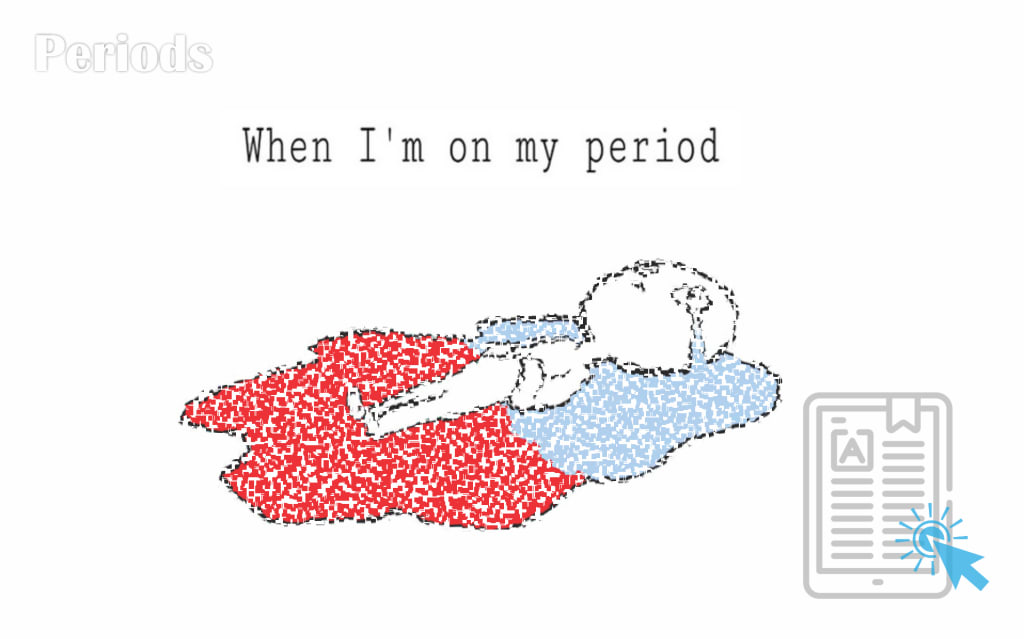Cycles of Power
Unraveling the Purpose and Evolutionary Marvel of Women's Menstrual Mysteries

A small number of species on Earth share the seemingly mysterious characteristic of the menstrual cycle.
We are a chosen few.
Monkeys, apes, bats, humans, and possibly shrews are the only mammals on Earth that menstruate.
And even though it's a waste of nutrition and physically inconvenient, we do it more often than any other animal.
So, what is the significance of this unusual biological process?
The answer begins with pregnancy.
During this process, the body's resources are skillfully utilized to create a suitable environment for the fetus and an internal sanctuary for the mother to nurture her growing child.
In this respect, pregnancy is impressive, but that's only half the story.
The other half indicates that pregnancy represents a conflict between mother and child.
Like all living things, the human body has evolved to facilitate the spread of genes.
For mothers, this means that they should strive to care for all offspring equally.
However, mothers and fetuses do not have the same genes.
The fetus also inherits genes from the father, and these genes can promote its survival by depriving the mother of more than her fair share of resources.
This evolutionary conflict of interest draws a woman and her fetus into a biological tug-of-war that is already occurring in the womb.
Her one factor contributing to this infighting is the placenta, a fetal organ that is connected to the mother's blood supply and nourishes the fetus as it grows.
In most mammals, the placenta is enclosed behind a barrier of maternal cells.
This barrier allows the mother to control the nutritional supply to the fetus.
However, in humans and some other species, the placenta penetrates directly into the mother's circulatory system and has direct access to the mother's bloodstream.
The fetus pumps hormones through the placenta into the mother's arteries, keeping them open to ensure a continuous flow of nutrient-rich blood.
With such unrestricted access, the fetus can produce hormones that increase the mother's blood sugar levels, dilate arteries, and increase blood pressure.
Most mammalian mothers can expel or reabsorb the embryo as needed, but in humans, once the fetus is connected to the blood supply, this connection can be disrupted, causing hemorrhage.
If the fetus fails to develop or dies, the mother's health is at risk.
During growth, the fetus continues to demand resources, which can lead to severe fatigue, high blood pressure, and conditions such as diabetes and pre-eclampsia.
Because of these risks, pregnancy is always a significant and sometimes risky investment.
Therefore, it makes sense for the body to carefully examine embryos to determine which ones are worth a shot.
Menstruation comes into play here.
Pregnancy begins with a process called implantation when the embryo implants itself in the endometrial lining that lines the uterus.
The endometrium has developed in such a way that implantation is difficult and only healthy embryos can survive.
But in doing so, the most invasive embryos are also selected, creating an evolutionary feedback loop.
The embryo engages in a complex, well-timed hormonal dialogue that changes the endometrium to allow implantation.
What happens if the embryo does not pass the test?
It is also possible that it manages to attach itself to the endometrium or partially penetrate the endometrium.
Dying slowly can leave the mother vulnerable to infections and can constantly send out hormone signals that destroy tissue.
The body gets around this problem by simply eliminating all possible risks.
Each time ovulation doesn't result in a healthy pregnancy,
the womb gets rid of its endometrial lining,
along with any unfertilized eggs, sick, dying, or dead embryos.
That protective process is known as menstruation,
leading to the period.
This biological trait, bizarre as it may be,
sets us on course for the continuation of the human race.
About the Creator
Kwandokuhle Ndethi
Born to express, not to impress.
Enjoyed the story? Support the Creator.
Subscribe for free to receive all their stories in your feed. You could also pledge your support or give them a one-off tip, letting them know you appreciate their work.






Comments
There are no comments for this story
Be the first to respond and start the conversation.